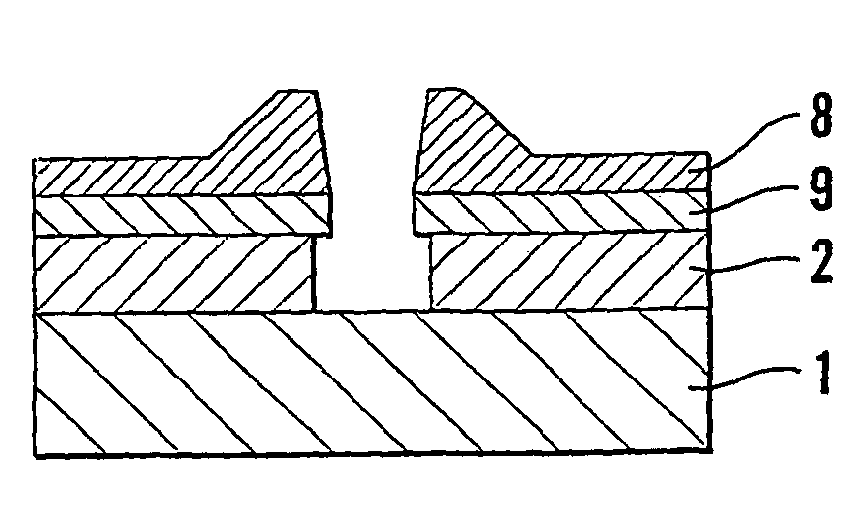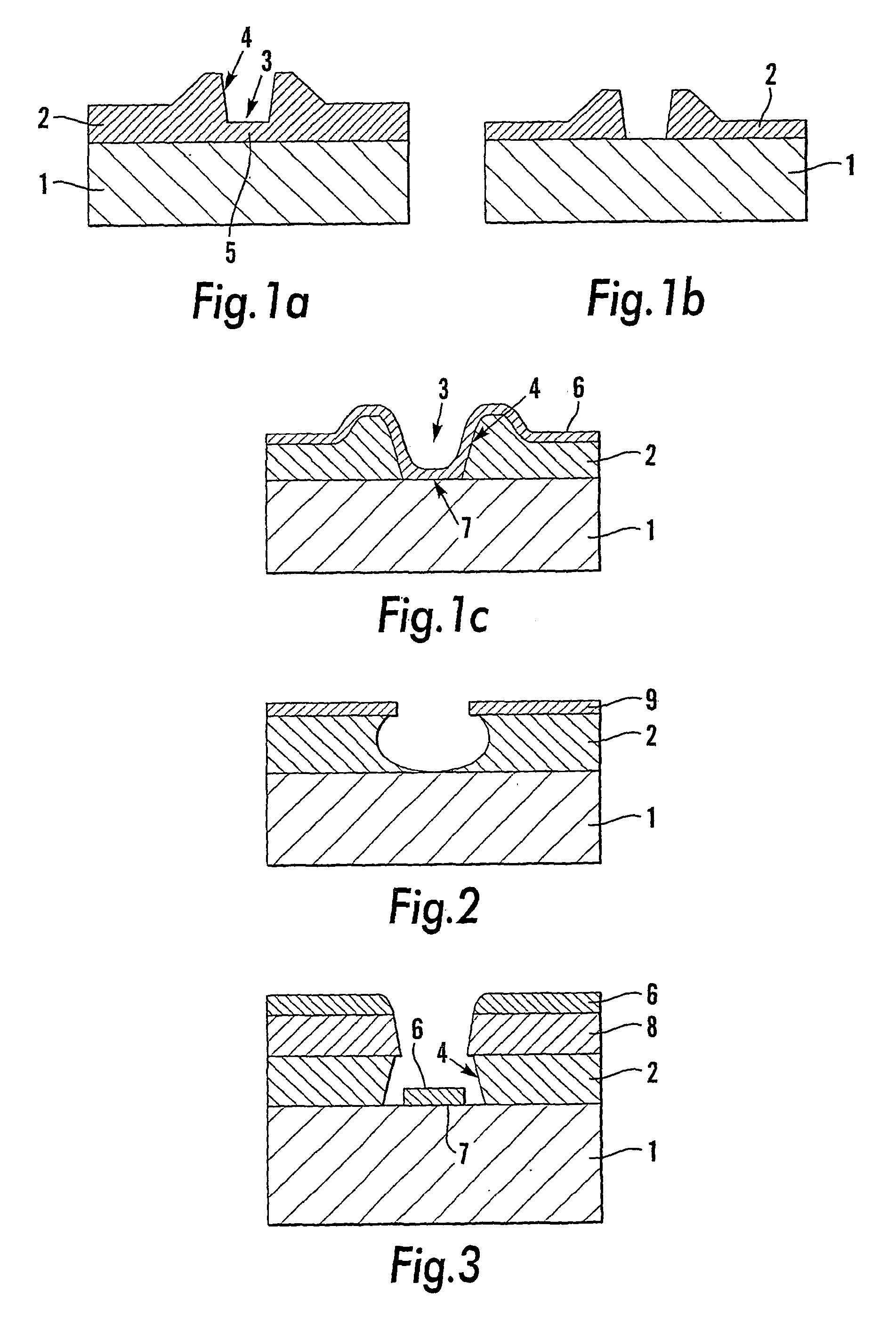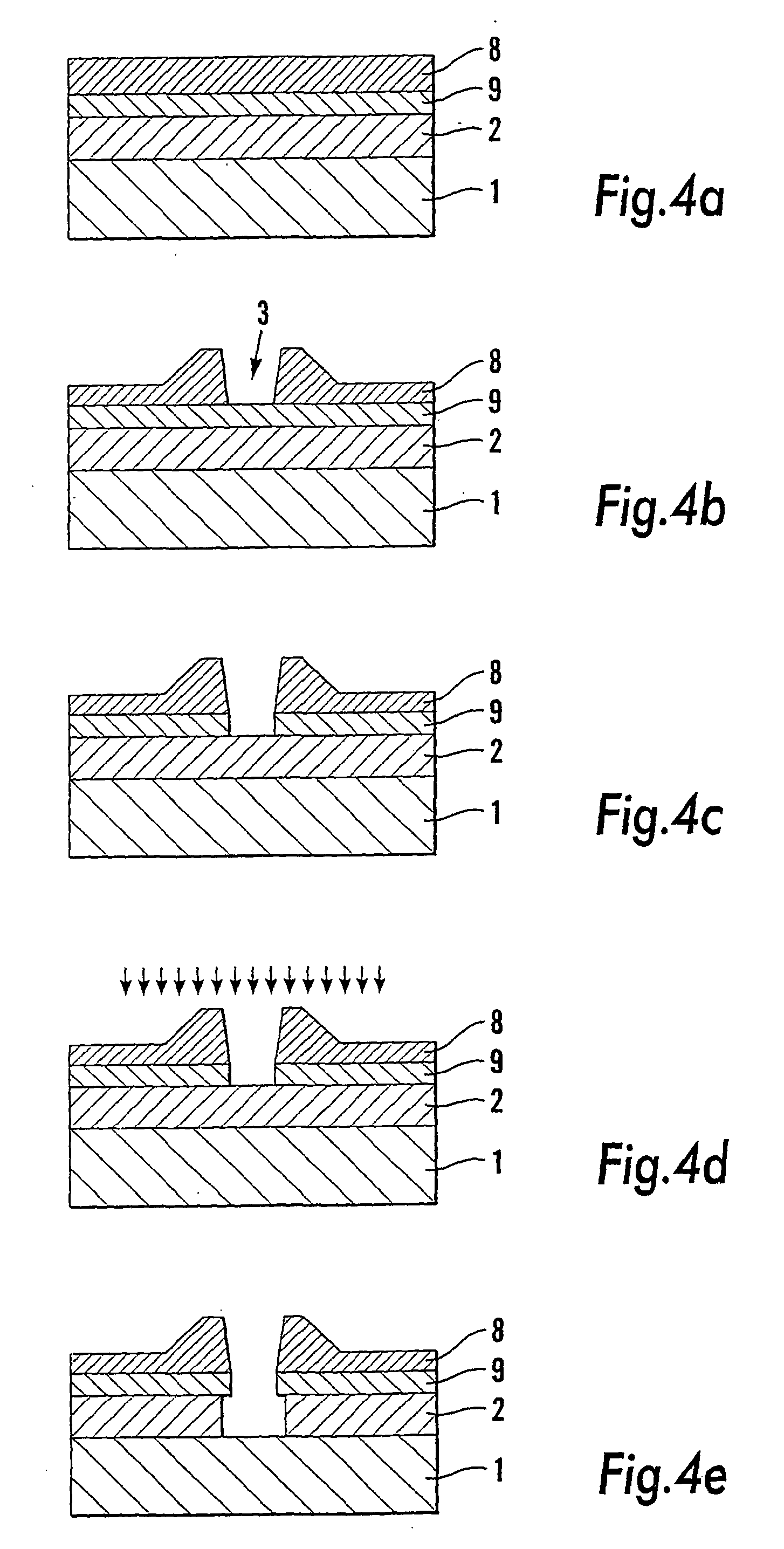Substrate for and a process in connection with the product of structures
a technology of substrate and product, applied in the direction of individual molecule manipulation, fluid speed measurement, optical light guide, etc., can solve the problems of uneven structure on the substrate, structural variations in the surface material of the flat plate, uneven surface embedding,
- Summary
- Abstract
- Description
- Claims
- Application Information
AI Technical Summary
Benefits of technology
Problems solved by technology
Method used
Image
Examples
first embodiment
[0033] FIGS. 4a-e show a coated substrate according to the invention and the stages for NIL of the same,
second embodiment
[0034] FIGS. 5a-c show a coated substrate according to the invention and the stages for NIL of the same,
third embodiment
[0035] FIGS. 6a-d show a coated substrate according to the invention and the stages for NIL of the same,
[0036] FIG. 7 shows a preferred device, seen from the side in cross-section, for execution of the imprint stage,
[0037] FIG. 8a shows a scanning electron microscope image of a coated, nanoimprinted and developed substrate according to the invention,
[0038] FIG. 8b shows a sketch of the substrate in FIG. 8a with reference to different parts in the same,
[0039] FIGS. 9a-b show scanning electron microscope images of a substrate according to the prior art, following "lift-off", a single layer of resist having been used,
[0040] FIGS. 9c-d show scanning electron microscope images of a substrate according to the invention following "lift-off".
[0041] According to the above problem description, it is important for an undercut profile to be produced in the coating layer / layers on the substrate. FIG. 1a shows a substrate that has been coated with a coating layer 2 (a resist) according to the pri...
PUM
| Property | Measurement | Unit |
|---|---|---|
| Thickness | aaaaa | aaaaa |
| Angle | aaaaa | aaaaa |
| Nanoscale particle size | aaaaa | aaaaa |
Abstract
Description
Claims
Application Information
 Login to View More
Login to View More - R&D
- Intellectual Property
- Life Sciences
- Materials
- Tech Scout
- Unparalleled Data Quality
- Higher Quality Content
- 60% Fewer Hallucinations
Browse by: Latest US Patents, China's latest patents, Technical Efficacy Thesaurus, Application Domain, Technology Topic, Popular Technical Reports.
© 2025 PatSnap. All rights reserved.Legal|Privacy policy|Modern Slavery Act Transparency Statement|Sitemap|About US| Contact US: help@patsnap.com



